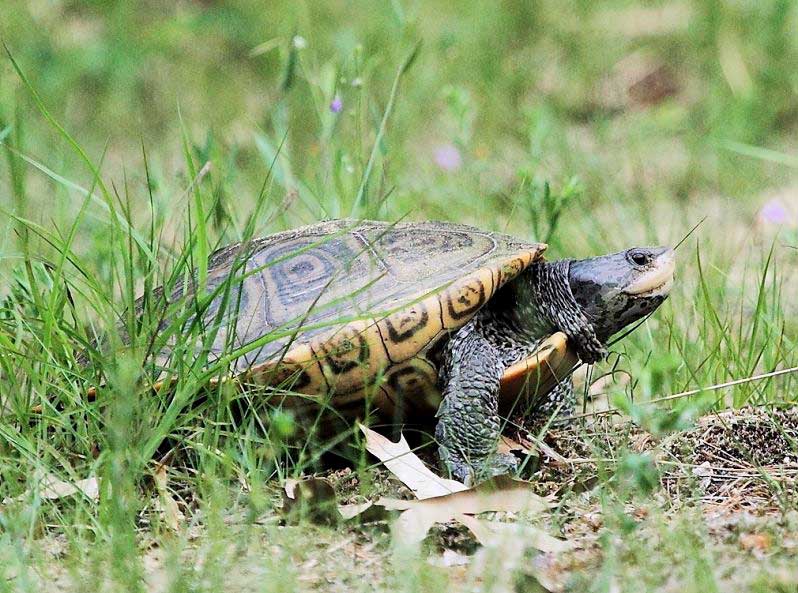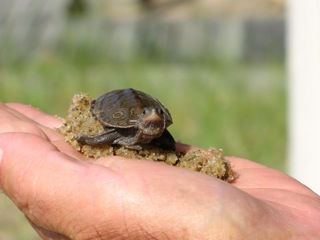
The diamondback terrapin (Malaclemys terrapin) has a very interesting ecology, among the turtles. Like true Rhode Islanders, terrapins are adapted to life on the edge of the sea, specifically in coves, bays, salt marshes, dunes, and other coastal features. Once hunted for meat and under pressure from habitat loss, Rhode Island’s terrapins have been in a precarious state for many years. Lately they are showing up in new places but sea-level rise and other effects of climate change could mean more changes are coming, and not necessarily for the good.
People from many different organizations are interested in terrapin conservation in Rhode Island, and the Diamondback Terrapin Working Group helps them exchange information and collaborate on projects. What’s up with our charismatic neighbors in the marshes? Here you will find reports, photos, and other resources about diamondback terrapins and the work of researchers and conservationists.

2012-13 assessment of Diamondback Terrapins along Rhode Island’s southern coast. It is appropriate to make special recognition of the contributions of Charlotte Sornborger, who for decades has worked to research the terrapin population in upper Narragansett Bay, to save their nesting habitat, and to educate the public about this rarely seen and little known turtle. In 2014, Sornborger’s work earned her the Rhode Island Distinguished Naturalist Award.